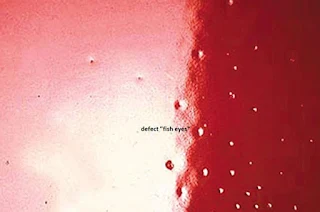"Oh?" I replied. "Why is that?"
"Sperm won't stop and ask for directions, either."
*
In the first factory I worked in, there was a skilled tradesman named Tony D. At lunch, Tony came over to our crib and read the Wall Street Journal. He made copious notes every day.
It was widely circulated that Tony was a millionaire. Tony never denied it.
One day, I asked him about his notes.
He said, "I have a system. Whenever I buy something, I set a target "Sell" price."
I asked him "How do you figure a sell price."
Glancing left, then right, he said...."I sell when the stock goes up 20%. A lot of stocks have another five percent left in them, but I like to sell a little too soon rather than a little too late."
Then I said something that pissed him off. "Gee, I don't know. Seems like there will be times you ought to dump a stock regardless of what you paid for it. In a way, what you paid for it is irrelevant."
*
The two cases, me not wanting to stop and ask directions or to drive back to the last intersection where we KNEW we were on the right track AND Tony refusing to consider anything but his buying price in calculating a Sell price, have something in common.
In both cases, the decision-maker is delaying the recognition that things are off-course.
The errant navigator does not want to acknowledge and lock-in the loss of time that driving back to a known position entails. He hopes to bumble his way out the other side without having to write-off a significant chunk of investment.
Tony the stock-picker does not want to lock-in his loss by selling. He hopes that the market will miraculously find value in Acme Inc and he will be able to bail out with his target profit. As long as he does not lock-in the loss, he can avoid acknowledging that he made a mistake or was unlucky. He can delay the pain and if he waits long enough, maybe he can completely avoid it.
There are legitimate reasons in favor of sunk-cost analysis. Changing direction incurs transaction costs. There comes a point in every project when it is time to shoot the engineers (and marketing team) and go into production.
Cost accounting determines cost per unit by estimating future sales volume to amortize fixed costs. Discontinuing a product before that projected volume is met locks-in the loss.
Sometimes that is the right thing to do. Tony could take a 25% loss and roll that money into a stock that, hopefully, had brighter prospects. I could get back on track and reach my destination without having to drive through Outer Elbownia after midnight.
A sense of responsibility
Academic studies indicate that people with a high sense of responsibility are more vulnerable to the sunk-cost trap. That means that the kind of people who fight their way into leadership and investment positions are the exact ones most likely to make poor decisions based on the sunk-cost trap.
One thought-game to avoid the trap is to ask yourself, "How would I play this hand-of-cards or allocate this portfolio or manage this brand if I inherited it from somebody who fell over dead from a massive heart attack?"
Would you have dumped Boeing when the 737-Max fiasco broke even if it had not quite met your Sell target or would you hang onto it?
Would you replace the monkey-suits with ones with elastic wrist bands as the old ones wore-out or would you let inertia carry you along?
Would you remove the door between the office and the semi-airlock and put it on the office side so the dislodged dirt went into the offices instead of the clean room? Or would you just accept what the sharp-pencils at HQ decided?
Would you continue to fund a weapons program that was collapsing under the weight of mission-creep or would you write-off the unrecoverable losses and reallocate the program's future funding to rejuvenating the products it was slated to replace?































